Disclosure: Meeple Mountain received a free copy of this product in exchange for an honest, unbiased review. This review is not intended to be an endorsement.
Overview
In Fantastic Factories, the players will be competing to earn the most victory points (VP) by the game’s end. At the beginning of each round, players will take turns selecting cards from a lineup to add to their hand. Once the players have selected their cards, they simultaneously roll their dice and assign them to the locations in their player areas to produce resources and goods. These are used, in turn, to pay the costs associated with the various functions printed on the cards in their tableau to produce VP or save up for the purchase of more cards in future rounds.
The game goes on like this until one of the end conditions is met and then the players tally up their final scores. The player with the most VP is declared the victor.
This is, of course, a very high level overview of Fantastic Factories. If you’d like to know more about how to play the game, continue reading. Otherwise, feel free to skip ahead to the Thoughts section to see what I think.
Setup
Setting up a game of Fantastic Factories is pretty easy. First, each player is given a Headquarters board, a player aid, 2 Energy tokens, 1 Metal token, and all 4 dice of a single color. Next the Blueprint cards are shuffled to form a deck. This is placed in the middle of the table face down and 4 cards from the deck are placed face up beside it. From the remainder of the deck, each player will be given 4 randomly drawn cards which they should keep secret.
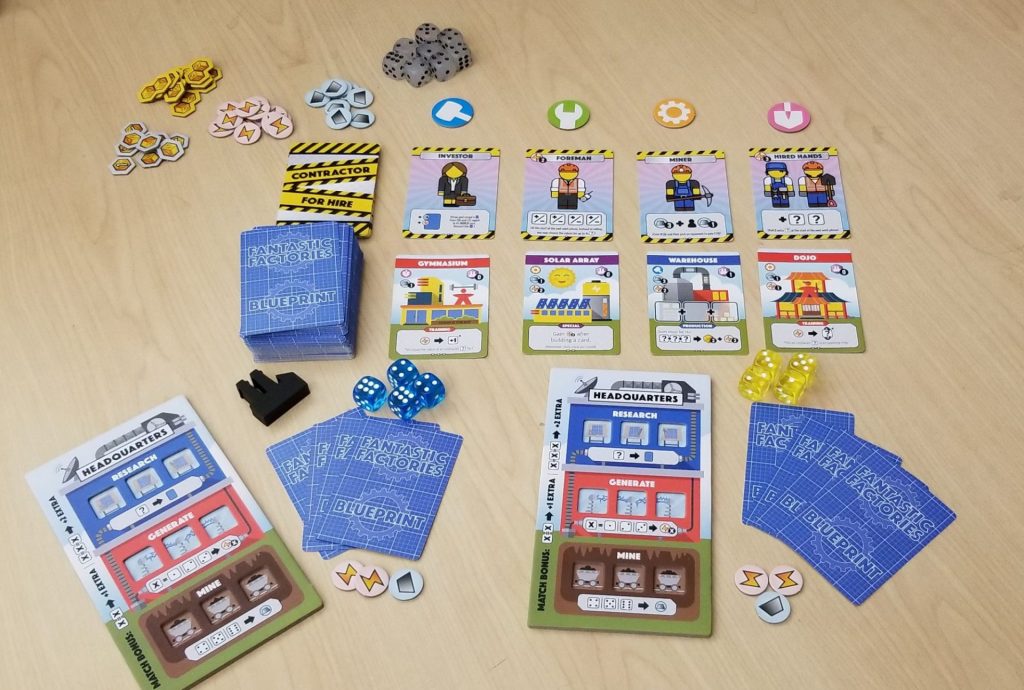
Next, the Contractor cards are shuffled to form a deck and this is placed face down above the Blueprint deck. Then 4 cards are drawn from it and placed above the previously drawn Blueprint cards. Next, the 4 Tool Label tokens are randomly placed above each of the face up Contractor cards. Everything else – the extra Metal and Energy tokens, the Goods tokens (which come in two different values: 1 and 2), and the white dice – is placed close by in a ready supply.
Finally, a start player is chosen and given the First Player token and you are ready to begin playing Fantastic Factories.
The Card Types
There are two card types in Fantastic Factories: Contractors and Blueprints. Contractors perform their function immediately upon acquiring them – functions such as: providing immediate resources, providing extra dice for use later on, or even giving a player a chance to gamble!

Blueprint cards, on the other hand, only provide the player with their benefits after they have been built (which we’ll cover shortly). There are many different Blueprints in the game with different names and different functions, but they all fall into 5 general types: buildings that allow you to spend resources to manipulate dice (red), buildings that are just worth VP at the end of the game (grey), buildings that allow you to spend dice and resources to produce Goods tokens (blue), buildings that give you free stuff whenever certain conditions occur (purple), and buildings that allow you to spend dice to produce resources (yellow).
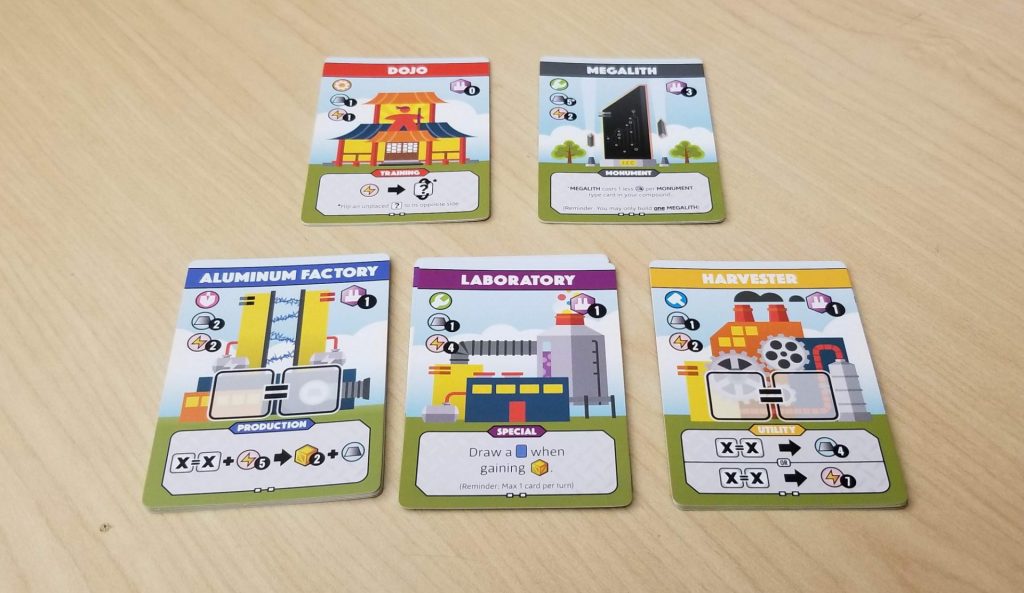
Phase One – Going to the Market
Each round of Fantastic Factories is broken up into two phases: the Market phase and the Work phase. In the first phase, each player will get to take a single card from the face up display. If the selected card is a Blueprint card, it is added to the player’s hand and immediately replaced with a new card drawn from the top of the Blueprint deck. If the chosen card is a Contractor card, it is handled a little differently.
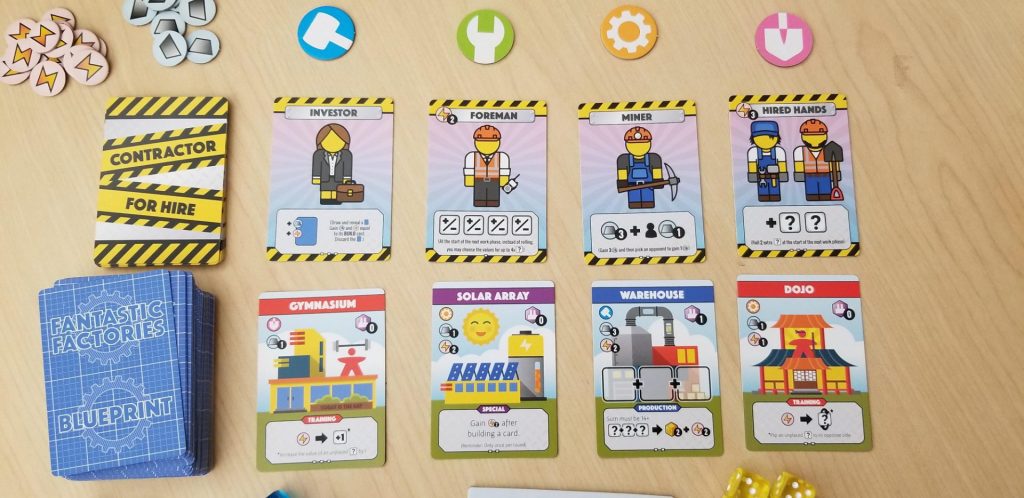
When choosing a Contractor card, the player must discard a Blueprint card from their hand whose top left corner iconography matches the iconography on the Tool Label token that sits above the selected card. Some Contractor cards also have an additional cost printed on them in their upper left hand corner. These costs, if they exist, must also be paid when the card is selected. After paying the cost, the Contractor’s ability is carried out, the card is discarded from the line up, and a new card is drawn from the Contractor deck to replace it.
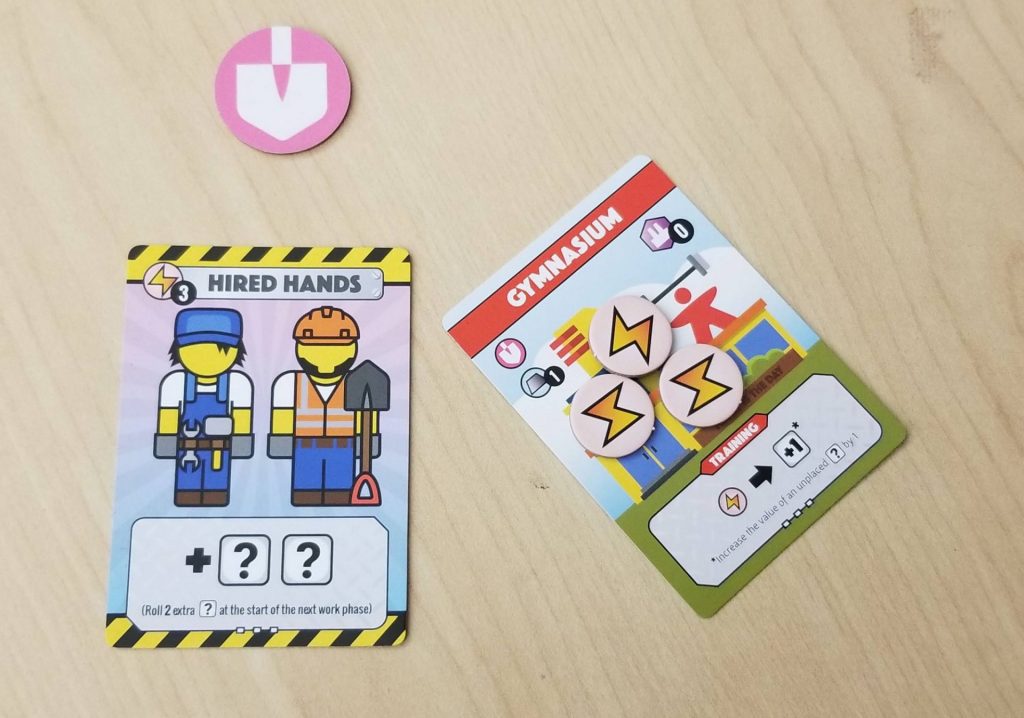
Phase Two – Hard at Work
During the Work phase, the players will simultaneously roll their dice and then carry out their actions. These actions can be carried out in any order. Once the player has run out of dice and resources to spend, their turn is over. The available actions are:
Building cards – the player selects a card from their hand and pays the cost shown in the upper left hand corner to add the card to their personal display. However, unless otherwise noted on the card, each player can only have a single copy of each unique building in their tableau for the entire game.
The building cost will always be a single icon and some collection of Metal and/or Energy tokens. To pay the iconography cost, a card with a matching icon must be discarded from the player’s hand. Then the player will discard the required Metal and/or Energy tokens shown on the card.

Headquarters actions – the Headquarters board is divided into three sections: Research (blue), Generate (red), and Mine (green). Each of these sections provides a different type of resource when dice are assigned to it. The Research area provides the player with Blueprint cards drawn off of the top of the Blueprint deck while Generate and Mine provide the player with Energy and Metal tokens respectively.
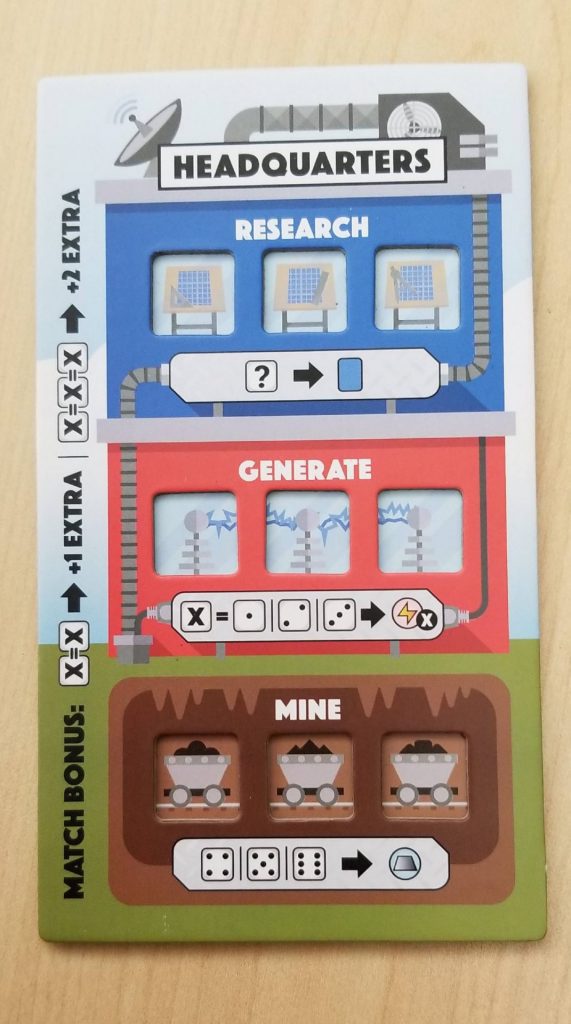
While the Research slots can accommodate dice of any values, the Generate and Mine areas can only accommodate dice of specific values. If any of the assigned dice in an area have matching values, then the reward provided comes with bonus resources. This is referred to in the game as a “Match Bonus”.

Card activation – some Blueprint cards can be activated by spending dice, Energy tokens, or Metal tokens (or some mixture thereof) in order to do certain things. The Nuclear Plant, for instance, will produce a Good token and an Energy token when a die with a pip value of 6 is placed onto it. Since there’s only a single die slot, this ability can only be used 1 time per round.
Once the Work phase comes to an end, each player must discard down to a total of 12 resources (Metal and/or Energy tokens) and no more than 10 total Blueprint cards in hand. Then the First Player token is given to the next player in clockwise order and a new round begins. The game continues in this fashion until one of the end conditions is triggered.
The End Game
Once any player has manufactured 12 or more Good tokens or has 10 or more buildings constructed in their play area, the end game is triggered. The current round is finished and then one final round is carried out. At the end of that final round, the scores are tallied and the player with the highest score wins. VP come from several sources: constructed buildings whose VP are indicated by the number printed next to the purple factory symbol on the card (the Nuclear Plant is worth 1 VP, for instance), the number of Goods tokens manufactured (each produced Good is worth 1 single point), and extra VP from the gray buildings (if there are any).
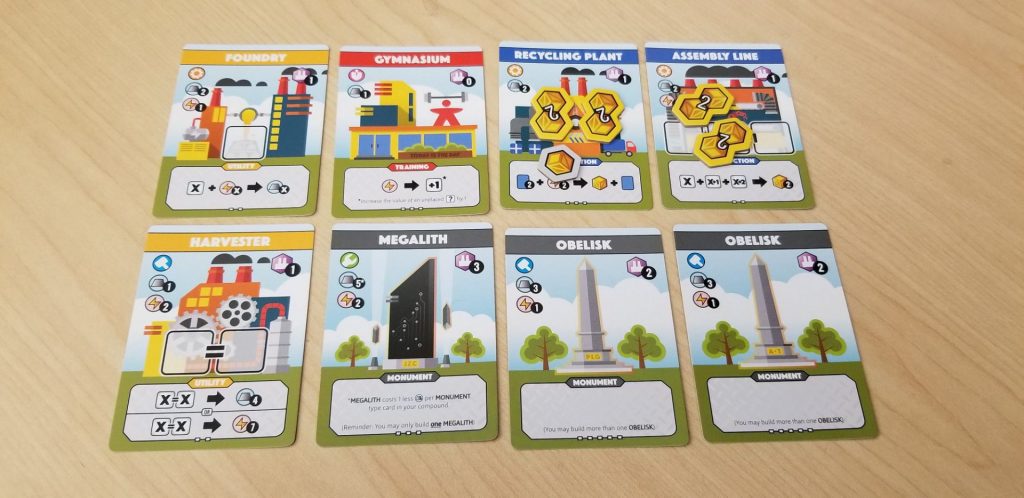
Thoughts
The first time I ever played a card based, dice rolling game was way back in 2013 when I was introduced to Machi Koro. Here at Meeple Mountain, we briefly touched upon the game and its mechanics in our Top 6 Dice Rolling Games list in 2016. While we don’t have a full review of the game, it is useful for the purposes of this discussion to elaborate a bit more on that game’s mechanics.
In Machi Koro, each player has 4 different landmarks that they are competing to build before anyone else can. This is accomplished by means of rolling dice to hopefully produce coin and then using that coin to purchase cards to add to your tableau. Those cards will eventually generate even more coin for you which allows you to buy even more cards and/or pay to build one of your landmarks. It’s a largely luck dependent game that’s super easy to learn and play and it is insanely popular.
The reason that I am dragging Machi Koro into this discussion is because as far as games that introduce people to the concepts of combining dice rolling with strategic play, Machi Koro has always been my go-to game. After playing Fantastic Factories, though, that has changed. Machi Koro, while presenting players with a few strategic decisions here and there, is largely a game of chance. You’re purchasing the cards in the hopes that your numbers come up so that you can capitalize on them if they happen to roll. While that doesn’t bother some people, it bothers me. I am not a fan of luck-driven games; I like to feel like I am in control of my destiny and I like to feel like the choices that I have made have mattered.
There are many differences between Fantastic Factories and Machi Koro, but the biggest (and arguably most important) is that Fantastic Factories presents the players with options to manipulate their dice. It is for this primary reason alone that Fantastic Factories has become my new go-to. Being able to turn an unwanted die into something useful separates me from the luck element and puts the control back into my hands. I really like that.
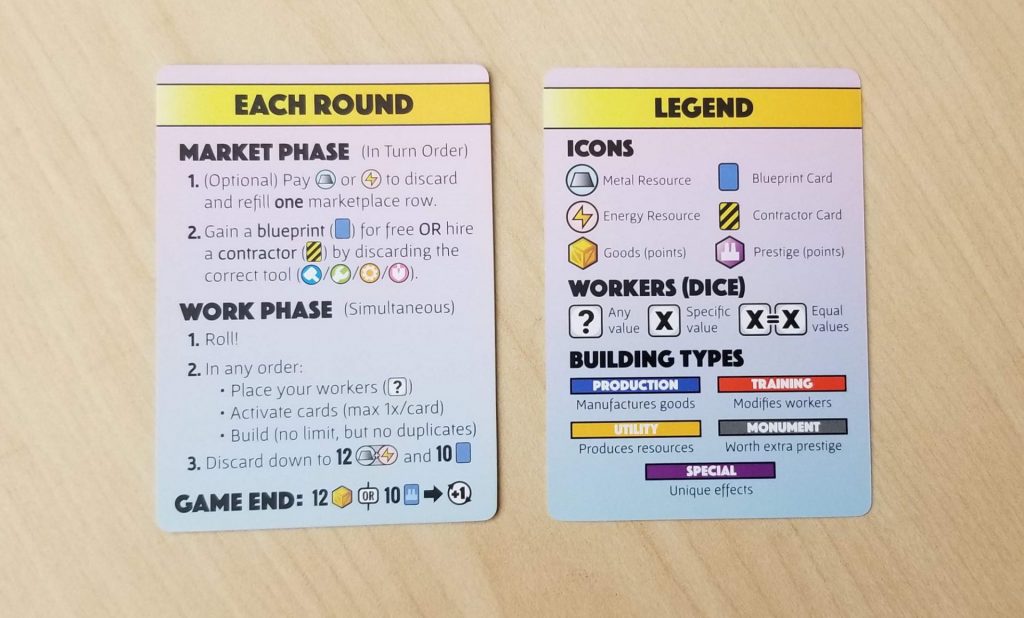
To be clear, I’m not saying that Fantastic Factories is entirely devoid of luck. In a game where you’re flipping cards over from a face down deck and then rolling dice to do things, that luck aspect is unavoidable. What I’m saying is that, regardless of which cards flip up or what the dice rolls happen to be, there will never be a moment in Fantastic Factories in which you won’t be able to do something useful. If you’re fortunate, you’ll be able to transform those dice into Goods tokens. At the very least, you’ll be able to turn your dice into resources and/or cards. And this is where I run into my only real negative issue with the game.
By the end of the game, most players are sitting on top of large piles of resources they can literally do nothing with. Since there’s no default conversion rate à la Catan, there’s no built-in method for dealing with these overages. You can’t convert them into Goods tokens without using a building to process them first. You can’t turn Metal tokens into Energy tokens (or vice versa). You can’t convert unwanted resources into points. And since leftover resources aren’t worth anything at the end of the game, they’re useless for holding onto. So you’re stuck having to intentionally try to produce fewer resources during the course of the game. The game forces you to play sub-optimally and that just seems very un-intuitive for an engine building game.
That’s really my only sticking point, though. Everything else about Fantastic Factories is pretty… well… fantastic. The artwork is sleek and attractive. The component quality is top notch and there’s even a swanky vacuum formed insert that holds everything perfectly. Add these things to the stellar game play, the easy set up and teach, and the fast tear down and you’ve got a near perfect game. Fantastic Factories is a game I am always glad to pull down off of the shelf. Whether I’m playing with seasoned board game veterans or people new to the hobby, there’s something there for everyone to enjoy.


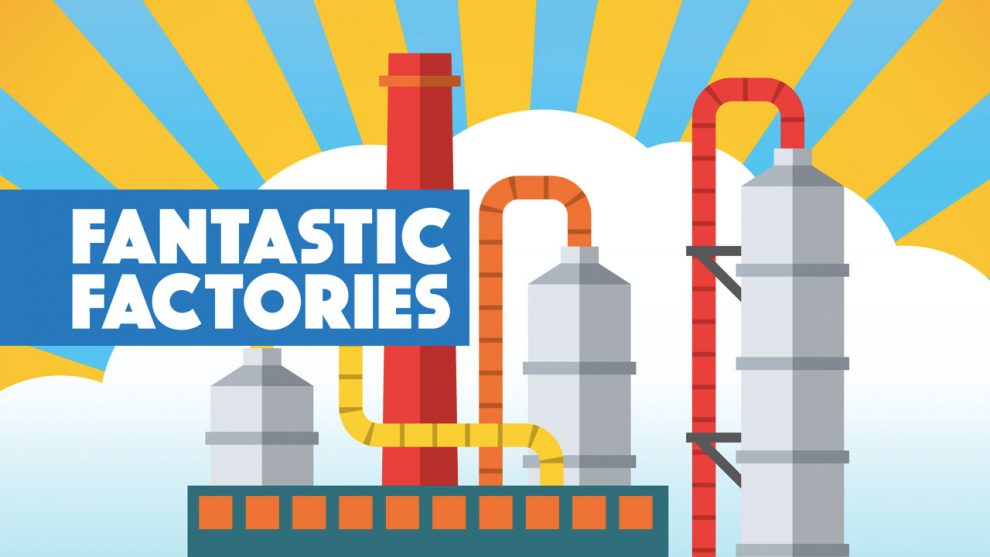
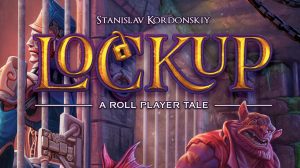


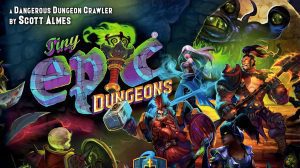




I do like Machi Koro. And this one looks interesting. I may have to give this one a shot!
Thanks for a fun and informative review.
Large piles of resources? You can have a max of 12 resources at the end of every turn. And with the right Factories you can convert Metal tokens into Energy tokens (or vice versa). If you play well you shouldn’t have that many resources left.